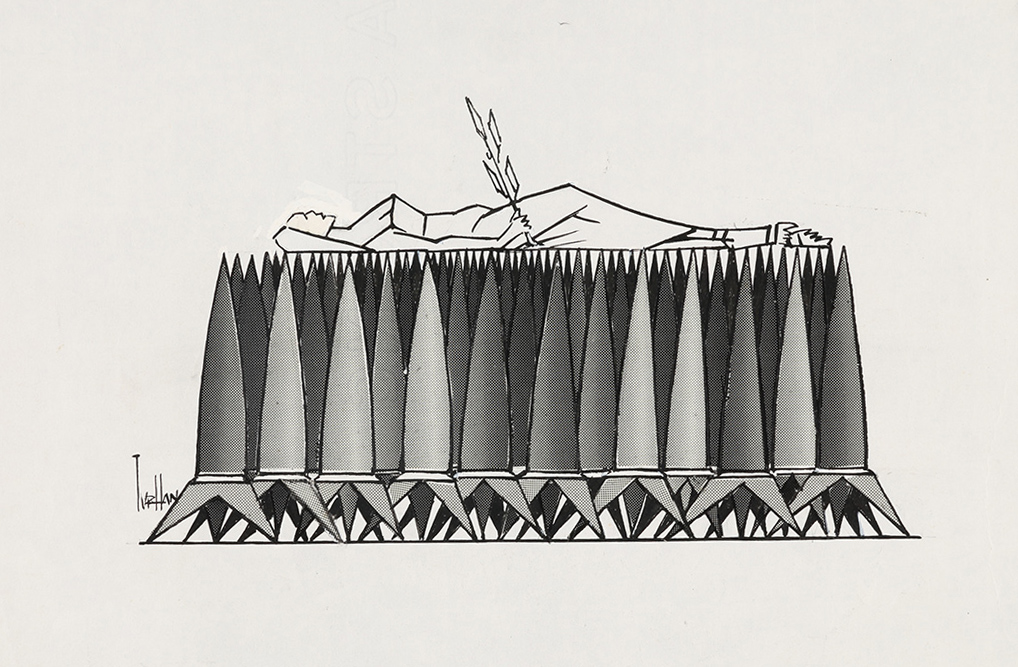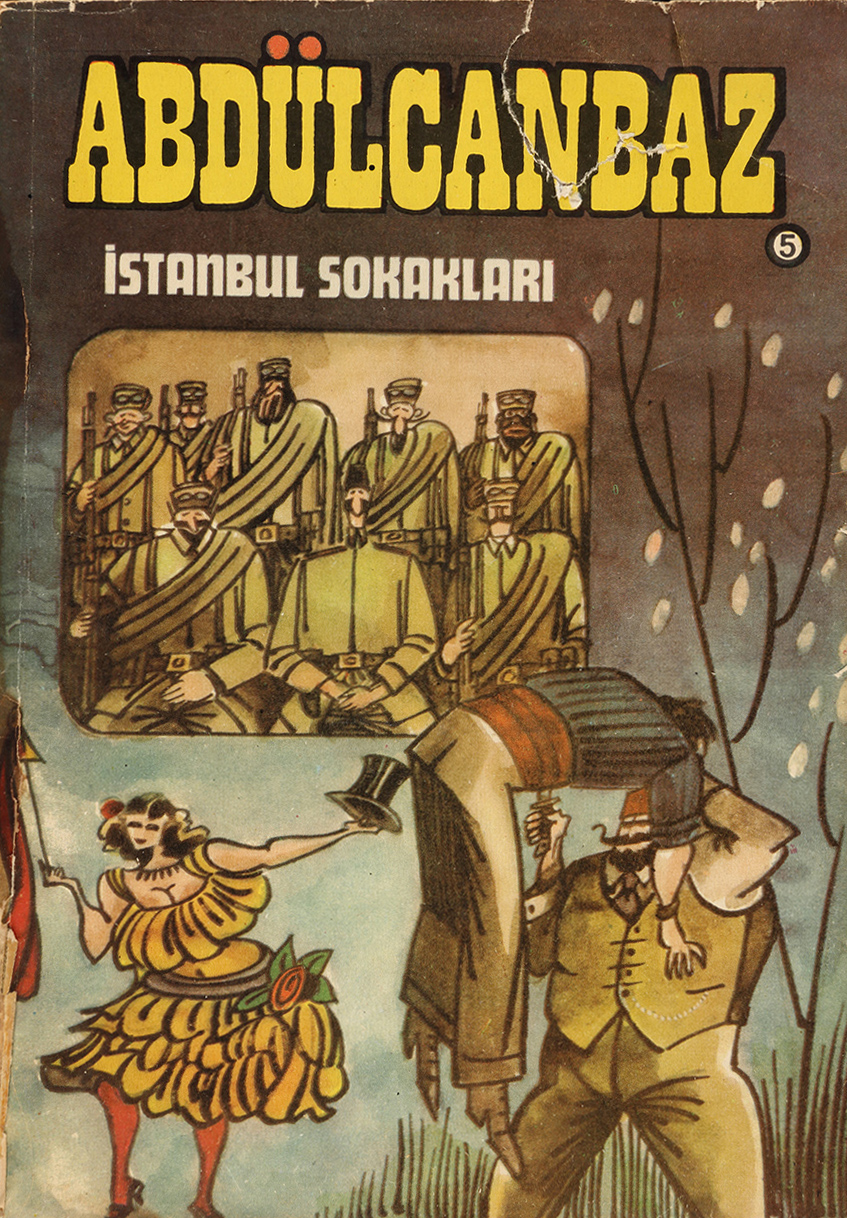Turhan Selçuk was a cartoonist, satirist and artist. His works are a milestone in Turkish comic books combining a bold art style with a cutting sense of humour. His works are currently being displayed at Yapı Kredi Kültür Sanat. It is a great collecting well worth checking out. I asked Behiç Ak -one of the exhibitions consultants- about the collection and Turhan Selçuk.
Translated from Turkish by Merve Pehlivan.
Luke: How did this retrospective exhibition come about and how were the drawings collected for it?
Behiç: It was Veysel Uğurlu’s idea, the director of Yapı Kredi Art gallery. Turhan Selçuk's daughter Aslı Selçuk was in favour of the idea, and that’s how we decided to host the exhibition. Behiç Ak and Semih Poroy served as advisors. In a brief amount of time, we went over the cartoons and the original Abdülcanbaz drawings and decided on the ones to include in the exhibition. The Abdülcanbaz drawings were owned by a collector named Osman Uslu and were exquisitely preserved. Osman Bey too welcomed the idea, which made things easier. We decided to show just the originals in the exhibition. We thought our effort could prove to the first step towards building a “Turhan Selçuk museum” one day. To arrange the presentation, Yeşim Demir came up with a highly successful design that gave prominence Turhan.
Luke: The style that Turhan uses in all of his work is very distinct and deceptively simple. It relies on bold lines, angular figures and playing with symmetry. How did he develop this style and who were his influences?
Behiç: It doesn’t look like Turhan was influenced by any cartoonist. His drawings reflect the spirit of a certain age, offering themselves as a practice of defiance. Turhan does it not only in the political sense, but with his style of drawing as well. He criticises issues of daily life by stepping out of the confines of everyday and denouncing political situations that never change. He draws “lasting” cartoons, attempts at a graphic novel with an illustration so unique that it can be given in a single frame, has the ability to blend sharp, stiff lines with extraordinarily soft ones, transforms cartoon as field of art with highly “anonymous” associations into one with an “individual style.”
Luke: I’d like to ask about his satirical work. Turkey has a long history of satirical cartoons as political expression from Yusuf Franko Pasha in the Ottoman Era to Erdoğan Dağlar, a more modern cartoonist. How does Turhan fit into this tradition?
Behiç: Selçuk can be considered right at the heart of political satire. He looks at Turkey and the world through a secular, republican and anti-imperialist perspective. He never compromises this attitude, he never bows or toadies to anyone, carries on drawing fearlessly, under all circumstances.
Luke: He seems drawn towards two main themes in his satirical work: hypocrisy and absurdity. Is that right and what other themes where important to him?
Behiç: Satire obviously encompasses a great variety of perspectives and styles. Turhan’s satire cannot be considered absurd. Absurdist satire focuses largely on existential and ontological questions, with social critique playing a secondary role. Take Ionesco’s plays for instance, “Rhinoceros” deals with humanity’s existential angst and the lack of solution thereof, rather than offer a direct social critique. Turhan’s work doesn’t reflect such absurdism. He is a cartoonist “extremely connected with the world.” His political concerns take precedence over his existential concerns. Needless to say, inconsistency and hypocrisy are essential to his humour. However, underneath these elements he emphasises class issues. Turhan’s main themes include inequality, injustice, lack of democracy, dismantling of secularity etc.
Luke: What I like about his work was the universality of it. Some of his cartoons are period-specific, for example to do with the Cyprus conflict or the Vietnam War. However, a lot of his work is accessible to everybody. Pictures like the Statue of Liberty walking off into the sea, or a man prostrating himself before a mosque made of money could be from today’s papers. Moreover, most of his images are meaningful and funny even if you have quite a low level ofTurkish. What is it about his work that is so easy to understand?
Behiç: Definitely an endeavour to last long and to find the unchanged within change itself. This makes his drawings both timeless and accessible to all cultures.
Luke: Which is your favourite of his satirical comics?
Behiç: This is a quantitative question almost impossible to answer. I guess it would be better to focus on the qualitative aspects of Turhan.
Luke: I’d like to talk about Abdülcanbaz. The character of Abdülcanbaz, the gentleman of Istanbul, the Formidable Turk, the postmodern hero has a huge history so much so that we could have a conversation just about this comic alone. So could you give me a brief overview of Abdülcanbaz?
Behiç: Abdülcanbaz is a 'man of the people’ type… A fictional hero of course. But he is a hero that chooses to stand on the side of honesty and integrity. He does have anti-hero tendencies too though. He surprises people. The people that surround him symbolise power or intellectualism. He is a timeless hero, he can travel in time. In a certain sense, he is a post-modern hero as you put it. The counter-character is Sami the Specks (Gözlüklü Sami). Sami is fickle and such a trickster that he comes across as a contrast to honest Abdülcanbaz.
Abdülcanbaz is a resilient and a living type. He is not unloveable. The deviousness of politicians is always portrayed in Sami the Speck. During times when fraud and deceit dominate the scene, this type is always in the foreground.
Luke: What is Abdülcanbaz’ legacy in the world of Turkish comics, literature and art?
Behiç: Unfortunately, these areas have not been studied much in Turkey. It is not even known how this treasure will be preserved. Single-artist museums have not really flourished here. Turhan deserves a museum dedicated to him only. Perhaps, from now on researchers might develop an interest in him and he can earn a genuine place.
Luke: I would like to ask about the book covers that he did. Who did he do book covers for and did his distinctive style transfer over into this work?
Behiç: Hababam Sınıfı (The Chaos Class) drawings for Rıfat Ilgaz are truly matchless. The harmony between Turhan’s drawing and Ilgaz’ literature perfectly rounds off this piece of work. He designed book covers for many other authors. For example, Redife’ye Güzelleme (Eulogy to Redife) by Füruzan, Hüyükteki Nar Ağacı (Pomegranate on the Knoll) and Binboğalar Efsanesi (Legend of the Thousand Bulls) by Yaşar Kemal, Good Earth by Pearl S. Buck in Turkish translation as well as Candide by Voltaire and many more.





